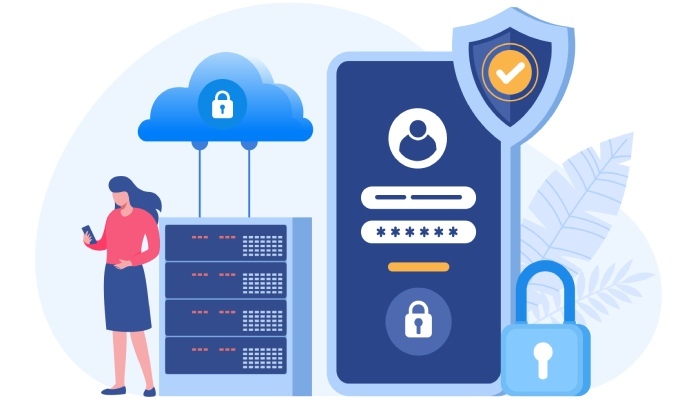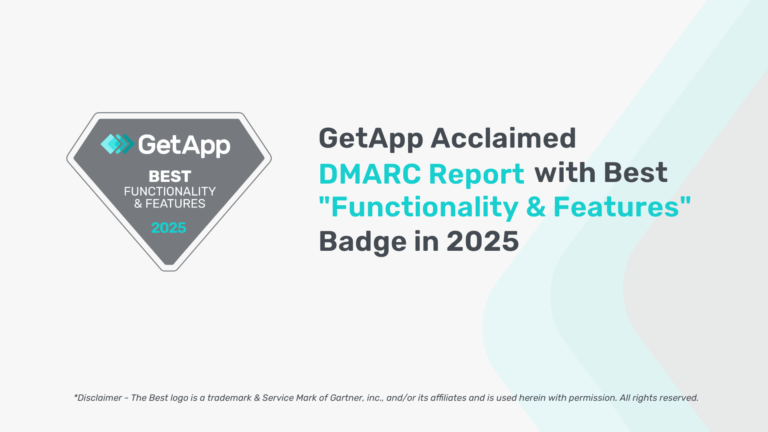5 Best Practices For Securing Your Security Token Service (Sts) Authentication
Implementing a robust Security Token Service (STS) authentication infrastructure is fundamental to safeguarding claims-based identity within modern, distributed environments. As businesses increasingly rely on web services, cloud applications, and federated authentication, ensuring that the STS and its related authentication protocols are secure is essential for resource protection and compliance. Below, we examine the critical best practices for securing your security token service, starting with how to fortify authentication and authorization, and moving to secure token handling and storage.
Best Practice 1: Enforce Strong Authentication and Authorization Controls
In an era where single sign-on (SSO), WS-Trust, and federated authentication drive seamless user access across platforms, securing authentication and authorization flows at the STS layer safeguards digital identities and protects resource access.
Implement Multifactor Authentication at the Identity Provider
A security token service frequently acts as an intermediary between identity providers and relying parties. Robust client authentication is the first defense against intrusions. Incorporating multifactor authentication (MFA) at the identity provider—whether through Windows Identity Foundation, Active Directory Federation Services, or OpenID—significantly reduces risks from compromised login credentials.
- Federation Services Integration: Using Microsoft solutions like Active Directory Federation Services provides flexible, scalable MFA options that integrate seamlessly into existing identity frameworks.
- Cloud Application MFA: Amazon’s AWS Security Token Service and NetIQ Access Manager by Micro Focus offer adaptable, standards-compliant MFA mechanisms for cloud applications.

Enforce Claims-Based Access Control for Token Issuance
With claims-based identity, the STS is responsible for verifying identity assertions and controlling access to applications or web services based on user group membership or group membership information. Relying parties depend on this mechanism to grant or deny application access.
- Claims Evaluation: Implement granular claims-based access control, only issuing security tokens to users with valid claims. This often includes checks against databases such as Oracle Database or using Active Directory group memberships.
- Identity Framework Configuration: Modern identity frameworks—such as Microsoft’s Windows Identity Foundation or open-source solutions like Apache CXF—support sophisticated claims transformation and evaluation rules, aligning access control with enterprise policy.
Secure the STS Endpoints and Authentication Protocols
Exposing the security token service endpoints over insecure channels makes the entire authentication service vulnerable. Secure the STS endpoints as follows:
Enforce Encrypted Communications
- Transport Layer Security: Use TLS for all communications with web service clients and between identity providers and relying parties, adhering to OASIS standards and open standards governing secure access.
- Protocol Implementation: Confirm that your implementation of the WS-Trust specification and Security Assertion Markup Language (SAML) ensures that tokens, credentials, and authentication data remain inaccessible to unauthorized parties during transmission.
Harden WS-Trust and SAML Token Validation Logic
- Review Token Validation: Regularly review and audit the token validation logic to identify vulnerabilities or misconfigurations. Many vendor solutions (such as those from IBM, Microsoft, and Oracle) include security tools to analyze token handling workflows.
- OASIS and Open Standard Compliance: Ensuring your STS implementation meets the latest OASIS and open standard guidelines for authentication services reduces risks from patent encumbrance and vendor-specific security holes.

Leverage Secure Authorization Policies for Application Access
- Relying Party Trust: Define and enforce explicit trust relationships between relying parties and the security token service. This is critical in cross-platform authentication settings and within federated authentication infrastructures.
- Custom Authorization Policies: Leverage SDK features, such as custom authorization policies in Windows Identity Foundation or Apache CXF, to control precisely who—and what—can request, renew, or cancel tokens.
Monitor and Enforce Token Lifetime Management
- Token Issuance Policies: Attach strict token lifetime and renewal policies to each issued security token. This limits the window of opportunity for attacks leveraging stolen or replayed tokens.
- Automatic Token Cancellation and Renewal: Employ automated token cancellation for expired or compromised tokens, while supporting secure and auditable token renewal workflows as outlined by modern identity management best practices.
Best Practice 2: Implement Secure Token Handling and Storage
The security of the authentication ecosystem hinges not only on how protocols are enforced but also on how the security token itself is managed throughout its lifecycle. From token issuance to cancellation, it is essential that handling and storage adhere to best-in-class standards.
Apply Robust Cryptography for Token Issuance and Storage
Encrypt Tokens at Rest and in Transit
- Token Cryptography: Use strong, standards-based cryptography—such as that mandated by the WS-Trust standard and the XML Encryption specifications—when generating and storing tokens. Security Assertion Markup Language (SAML) and XML tokens, frequently used in enterprise and cross-platform scenarios, must never be persisted in plaintext.
- Protected Token Storage: Secure all locations where token data records, issued XML tokens, or token metadata are stored—whether it’s in Oracle Database, a cloud key vault, or an application’s own web service infrastructure.

Secure Token Issuance Mechanisms
- Token Manipulation Protection: Guard the process of token issuance against manipulation by strictly validating requests from web service clients, using strong client authentication protocols, and employing measures that protect against token replay and forgery.
- Token Signing: Always sign tokens with private keys managed by the trusted token issuer. Use secure key management practices supported by vendor solutions like Microsoft, IBM, or Oracle, or through open-source SDKs and frameworks.
Restrict Token Access and Validity
- Role-Based Token Access: Restrict access to tokens to only those components of the system that require them for legitimate resource access. For example, web service clients should only have short-term access to their own authentication tokens.
- Token Lifetime and Revocation: Configure short token lifetime intervals and robust token cancellation procedures. A Web Services environment with proper token renewal and revocation minimizes the risk window for compromised tokens.
Prevent Token Replay and Unauthorized Use
Bind Tokens to Intended Usage
- Resource Binding: Designed tokens to include explicit claims or attributes that tie them to specific application resources or services, preventing their unauthorized use elsewhere.
- Audience Restriction: Set the token’s “audience” or “relying party” attribute so that the token cannot be used beyond the intended destination, in accordance with WS-Trust and SAML best practices.
Implement Token Usage Auditing
- Comprehensive Token Audit Trails: Maintain detailed logs of all token activity—from creation, validation, and renewal to cancellation—using capabilities built into platforms such as Oracle Database, Active Directory Federation Services, or AWS Security Token Service.
- Anomaly Detection: Leverage web service infrastructure monitoring to identify abnormal authentication flows or unauthorized token manipulations, quickly triggering administrative intervention.

Embrace Open, Auditable, and Standards-Based Solutions
- OASIS Standard Adoption: Whenever possible, choose vendor solutions, closed-source solutions, or open-source solutions that rigorously implement open standards backed by OASIS, such as the WS-Trust specification and SAML.
- Cross-Platform SDK Support: Utilize software development kits and SDK components from reputable software vendors—such as Microsoft, Apache, or Oracle—that support interoperable, standards-driven token handling, suitable for both cloud and on-premises scenarios.
By implementing the controls, policies, and technical safeguards detailed above, organizations can significantly harden their security token service (STS), maintain the integrity of their claims-based identity framework, and foster secure, seamless authentication across diverse platforms and services.
Best Practice 3: Ensure Robust STS Configuration and Regular Updates
A well-configured security token service (STS) is the backbone of strong claims-based identity assurance across web services, single sign-on (SSO) solutions, and federated authentication platforms. Regular reviews and updates of STS settings help preserve the integrity of authentication flows, security token issuance, and resource access control mechanisms, ensuring continued compliance with evolving industry standards.
Prioritize Security-First Configuration
Proper configuration of the STS is essential for the protection of authentication protocols such as WS-Trust and SAML, as well as seamless token-based authentication between identity providers and relying parties. When deploying solutions using Apache CXF, Windows Identity Foundation, or vendor solutions from IBM or Oracle, administrators should follow best practices for cryptography, secure storage of login credentials, and tight definition of token lifetime.
Secure Token Issuance and Token Validation
- Enforce rigorous token issuance policies: Ensure that every security token generated by the STS contains the necessary claims (such as group membership information and user identity assertion) and is cryptographically signed by a trusted token issuer.
- Validate tokens stringently: Relying parties and web service clients should verify signature integrity and validate every security token against revocation lists or callback to the STS for real-time validation, minimizing the risks from compromised tokens.
- Implement token renewal and token cancellation mechanisms: Token renewal ensures users can maintain seamless application access without re-authentication, while secure token cancellation limits exposure from lost or stolen tokens.
Keep Up with Security Patches and Protocol Updates
An STS implementation should always be aligned with the latest OASIS standards and WS-Trust specification updates. Software vendors like Microsoft and Oracle routinely patch their solutions (e.g., Active Directory Federation Services and Oracle Database authentication integration). Promptly applying these patches mitigates vulnerabilities in your identity framework and supports advanced authentication services.

Fine-Tune Token Lifetime and Access Control
Configuring token lifetime appropriately limits the window of opportunity for abuse. Cloud applications and hybrid web service infrastructures benefit from short-lived tokens, reducing risks if tokens are intercepted. Striking a balance between usability and security is especially important for federated authentication and cross-platform authentication environments, including integration with OpenID or the AWS Security Token Service.
Enhance Protection with Security Headers and Token Manipulation Safeguards
- Use secure XML token handling: Security Assertion Markup Language (SAML) and WS-Trust rely on XML formatting, so enforce schema validation and protect against XML-based attacks.
- Add token manipulation protection: Integrate replay prevention techniques, timestamps, and session binding features supported by leading STS vendor solutions.
Best Practice 4: Monitor, Audit, and Respond to Security Events
Proactive monitoring and auditing are critical to maintaining trust in an STS. With the STS acting as the gatekeeper for digital identity, claims-based authorization, and enterprise-wide single sign-on, lapses can have far-reaching privacy, compliance, and operational impacts.
Deep Audit Logging and Token Data Records
Capture and Retain Critical Events
A robust auditing policy should record every aspect of the authentication process, including token issuance, token validation, token renewal, and token cancellation actions. The STS should also log failed authentication attempts, anomalous access control requests, and token manipulation alerts. Maintaining comprehensive token data records enables forensic analysis in the event of security incidents, providing transparency for governance and compliance reviews.
Visibility Across Web Service Infrastructure
- Monitor integration points: Relying parties, web service clients, and cloud applications should send audit logs pertaining to STS operations—such as successful SSO attempts, failed resource access, or changes detected by authentication protocols—back to a central system.
- Align with recognized frameworks: Many enterprises use open-source solutions like Apache CXF or commercial offerings from Micro Focus (NetIQ Access Manager) to centralize logging and reporting capabilities. These solutions help track distributed application access patterns and bolster overall web service infrastructure monitoring.
Real-Time Threat Detection and Incident Response
Set Up Alerts for Key Events
Implement automated alerting for suspicious events such as rapid token renewal, unexpected changes in token issuer behavior, or high token cancellation rates. Leveraging native capabilities in Windows Identity Foundation, Active Directory Federation Services, and cloud platforms enhances real-time visibility.
Swiftly Initiate Remediation
Establish incident response plans that detail steps for rapid token revocation, user group membership review, and temporary suspension of authentication services if compromise is suspected. Integrating with identity management tools provides the agility necessary for modern federated authentication ecosystems.
Best Practice 5: Educate Developers and Stakeholders on STS Security Risks
Continuous education is crucial for all team members involved in secure claims-based identity deployment. Understanding security token service (STS) mechanisms, claims handling, and federated authentication nuances ensures developers, administrators, and decision-makers can make informed choices, avoid missteps, and champion best practices across the identity framework.

Developer Training in Secure Token Management
Incorporate STS Security in the SDLC
Developers often interact directly with the STS through software development kits (SDKs), WS-Trust APIs, and configuration of identity provider connections. Offer regular training on secure token lifecycle management, cryptography, token validation, and secure storage of login credentials. Training should cover best practices for token-based authentication, as defined by OASIS standards and supported by open standard protocols like SAML or OpenID.
Platform-Specific Security Awareness
- Windows Identity Foundation and Active Directory Federation Services require in-depth platform knowledge for secure federation configuration and group membership information management.
- Open-source solutions such as Apache CXF present unique challenges around token validation and token manipulation protection, while closed-source solutions might emphasize specific compliance controls or proprietary authentication protocols.
Stakeholder Awareness and Cross-Functional Engagement
Promote Understanding of Authentication Flows
Conduct regular awareness sessions for project managers, application owners, and executive stakeholders outlining the importance of secure authentication, identity assertion, resource protection, token issuer trust chains, and access control policies. Highlight risks associated with misconfigured STS, weak cryptography, and insecure group membership delegation.
Communicate Regulatory and Business Implications
Ensure all stakeholders appreciate the impact of security breaches on resource access, digital identity claims, and overall application access. Emphasize how secure STS operation supports single sign-on, web service client authentication, and integrated cloud application protection—critical concerns for organizations running hybrid or cross-platform authentication models.
FAQs
What is a security token service and why is it important?
A security token service (STS) is a component responsible for issuing, validating, and managing security tokens used in authentication and authorization flows for web services and enterprise applications. It establishes trust relationships between identity providers and relying parties, enabling secure claims-based identity, single sign-on, and resource access.
How does WS-Trust relate to claims-based identity and STS?
WS-Trust is a key protocol defined by the OASIS standard that specifies how security tokens are requested and issued. It enables secure interaction between clients, security token services, and relying parties within claims-based identity models, supporting token issuance, token validation, and token renewal.

What are the risks if an STS is not regularly updated?
If an STS is not updated, it may become vulnerable to known security threats, protocol flaws, and unpatched bugs. This can compromise authentication, enable unauthorized token issuance or manipulation, and expose sensitive application access or resource protection mechanisms.
How do SAML and OpenID enhance single sign-on?
SAML and OpenID are open standard protocols that facilitate federated authentication and single sign-on (SSO) between different domains and platforms. They rely on STS to issue and validate tokens, ensuring seamless, secure user experiences across multiple web services.
What is token lifetime and why does it matter?
Token lifetime defines the validity period of a security token. Short token lifetimes reduce the window of opportunity for attackers in case a token is intercepted, enhancing the overall security of authentication protocols and web service infrastructures.
Can I use open-source and commercial STS solutions together?
Yes, hybrid deployments using open-source (e.g., Apache CXF) and commercial (e.g., Microsoft Active Directory Federation Services, Oracle solutions) STS implementations are common. The key is to ensure all components adhere to recognized standards and are integrated securely for cross-platform authentication.
Key Takeaways
- Rigorous STS configuration, frequent updates, and secure token lifecycle management are crucial for protecting authentication, claims-based identity, and resource access.
- Continuous monitoring, comprehensive audit logging, and rapid incident response are essential components of robust access control and web service infrastructure security.
- Developer and stakeholder education on STS risks, open standards like WS-Trust and SAML, and platform-specific security is vital for resilient federated authentication environments.
- Employing both open-source and vendor solutions can support diverse application access scenarios, provided integration and compliance with OASIS standards are maintained.
- Proactive governance of STS adaptation, including token issuance, validation, renewal, and cancellation, underpins enterprise identity management and digital identity protection.
Similarly, implementing SPF, DKIM, and DMARC strengthens identity trust in email systems just as secure STS practices protect digital authentication frameworks.







